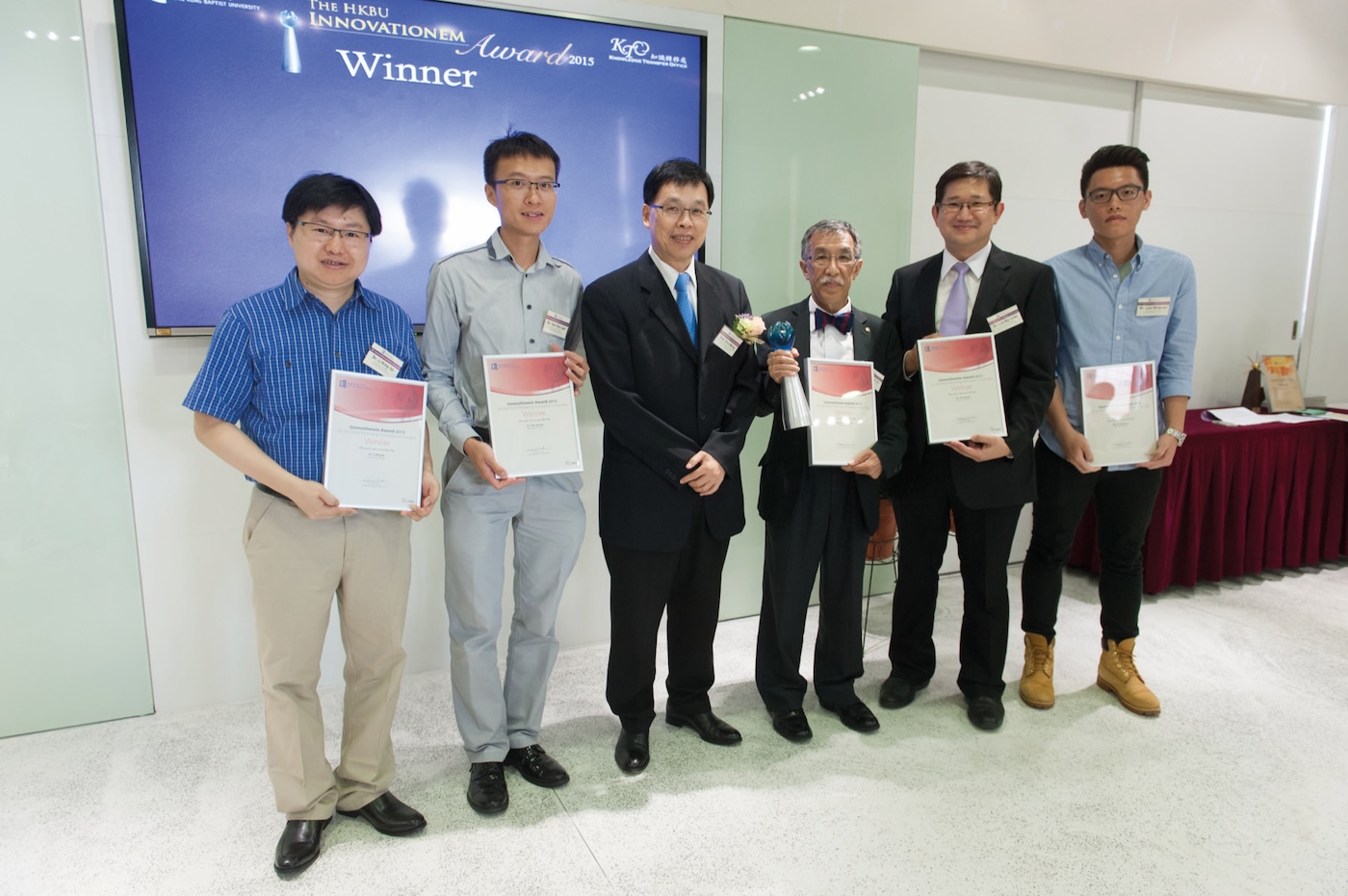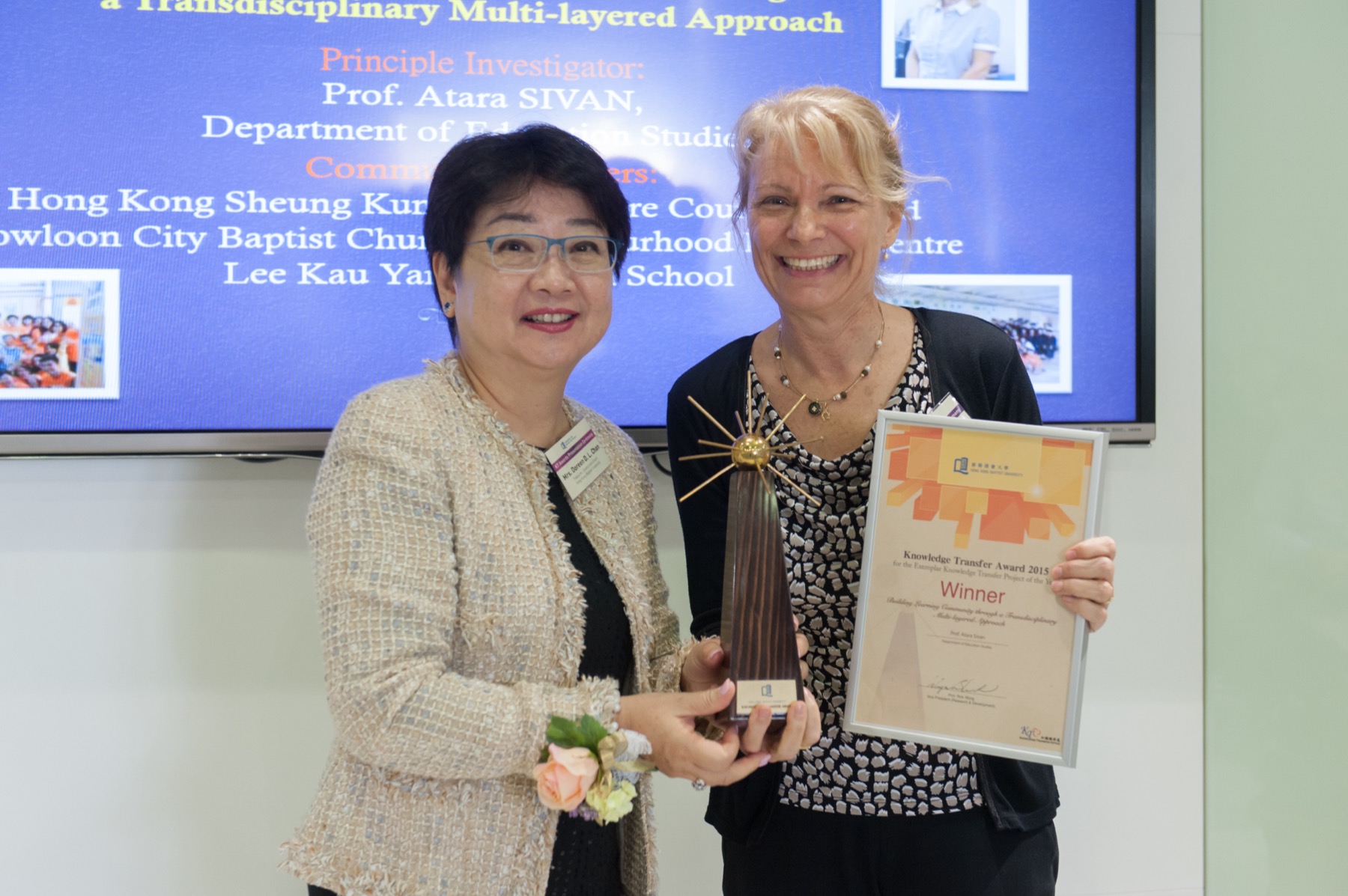Previous Events
KT Awards Recipients of Year 2014/15
The Innovationem Award (renamed as HKBU Innovation Award)
Awardee: Prof. CHEAH Kok Wai
Department of Physics
Project:
“Ultra-hard, Anti-scratch Thin Film”
This project brings a huge economic impact. Through the extensive industry engagement over the years, Prof. Cheah is devoted to solving technical problems that hindered the advancement of technology and economic growth. Recently, he has led his research team to demonstrate how to bring excellent research to the business and industry sectors, as evidenced by the support of a grant from the Innovation and Technology Fund for his start-up and a venture capital investment as well as engagement for prototypes with a few major cover screen manufacturers internationally.
This five-month-old start-up namely “Cathay Photonics Limited” (CPL) has won a venture capital investment from Radiant Venture Capital Ltd., which valued the company at about HK$50 million. The mission of CPL is to deliver low-cost, high-throughput fabrication of ultra-hard sapphire crystal thin-film. The technology would be applied to cover glass of watches and electronic devices such as mobile phones, tablets and smartphones. The tremendous ascent of CPL has both excited and mystified many.
With strong outreach efforts through the media, Prof. Cheah has engaged with a few major suppliers of cover screen. In the meantime, Prof. Cheah and his team won the 2015 HKBU Innovationem Award on 9 June 2015 in recognition of this outstanding work.
The Knowledge Transfer Award (renamed as HKBU Knowledge Transfer Award)
Awardee: Prof. Atara SIVAN
Department of Education Studies
Project:
“Building Learning Community through a Transdisciplinary Multi-layered Approach”
This is a social impact case. Through extensive community engagement and research on transdisciplinary multi-layered approach over the years, Prof. Sivan from the Department of Education Studies has successfully established a platform for knowledge transfer within different generations and community sectors, whole person development, engagement in civic/community service as well as expansion of transdisciplinary collaboration and mutual understanding and learning from one another.
The project aimed at establishing a Community of Practice (CoP) consisting of academics and professionals, students from the Faculty of Social Sciences, elderly community members and secondary school students. Using a transdisciplinary three-layered approach, participants at each layer were empowered to engage problems and issues, and work collaboratively to bring about changes and improvement to the community. One emphasis was put on the social aspects of community development and team work. The learning community infused academic and professional knowledge while integrating with practices and connecting with the society. These elements brought together created the synergy to provide the best opportunities for successful contribution to the society. In the project, elderly sector was the main focus.

